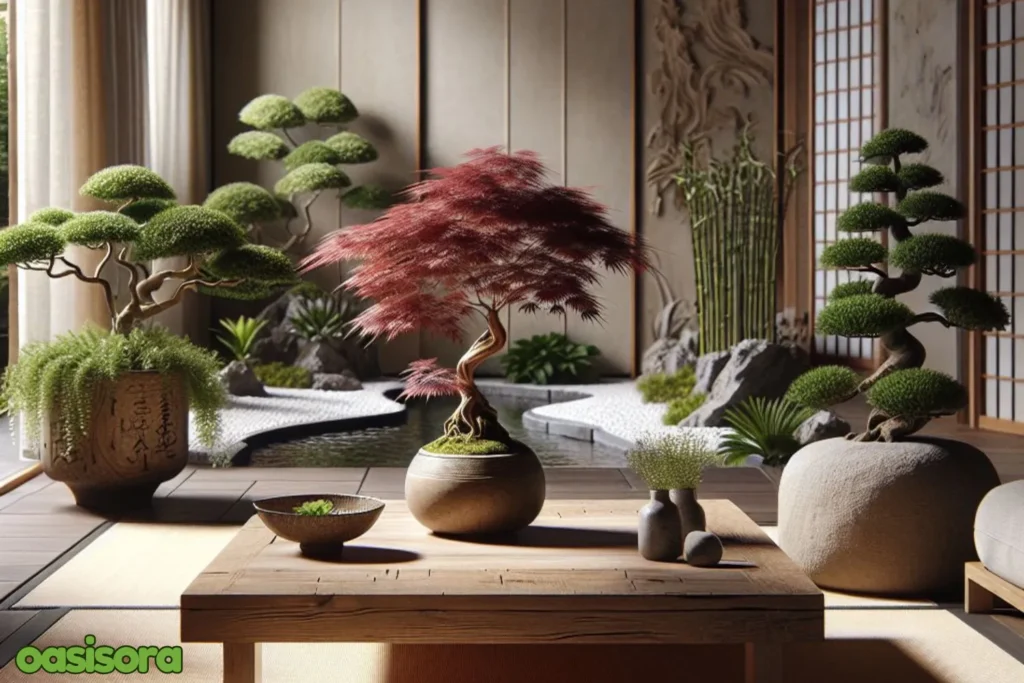
Crafting an indoor yard with Japanese aesthetics and minimalism is undoubtedly possible with the help of incredible Japanese indoor plants. These plants bring peace and calm to your home.
They make your home feel relaxed. They also help you feel less stressed and happier. The best part is that they are easy to care for and grow well. They are perfect for making your home peaceful or cleaning the air.
Read this post about the best Japanese indoor plants for a serene and peaceful home. So, add these remarkable plants to mix minimalism and a love of nature to your yard. Let’s get started!
Essential Japanese Indoor Plants for a Serene Atmosphere
Create a serene and peaceful atmosphere in your home with these excellent Japanese plants. Perfect for Zen and minimalist spaces, these attractive plants bring a touch of peace and tranquility to any room:
- Bonsai Trees
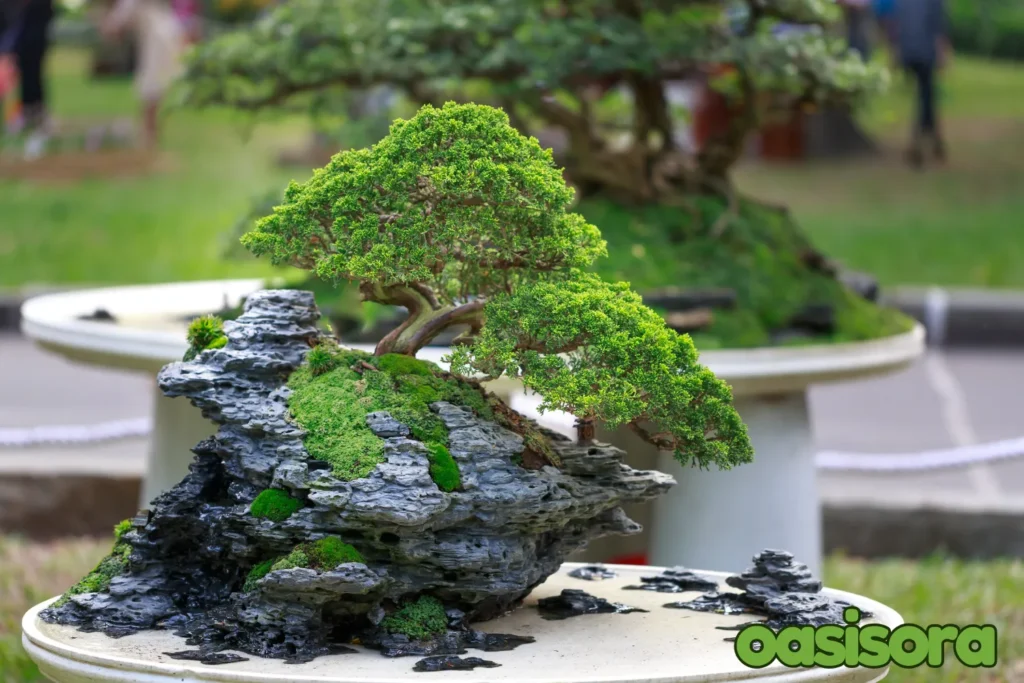
Bonsai
A Japanese garden isn’t complete without a bonsai tree. They are timeless symbols of Japanese grace. These small trees show harmony between nature and people.
Bonsai trees are great for a calm home due to their lovely shapes. Plus, require gentle care to maintain their unique shape and size.
Indoor-Friendly Bonsai Varieties
Here are 2 main varieties of bonsai:
- Ginseng Ficus

Ginseng Ficus
- Elm of China

Elm of China Bonsai
Care Requirements for Bonsai Trees
To keep your Bonsai Tree thriving, follow these care tips:
- Light: Provide gentle, indirect light
- Watering: Water carefully, avoiding overwatering
- Pruning: Trim branches regularly to maintain shape
- Shaping: Use specialized tools to create desired forms
- Japanese Aralia (Fatsia Japonica)
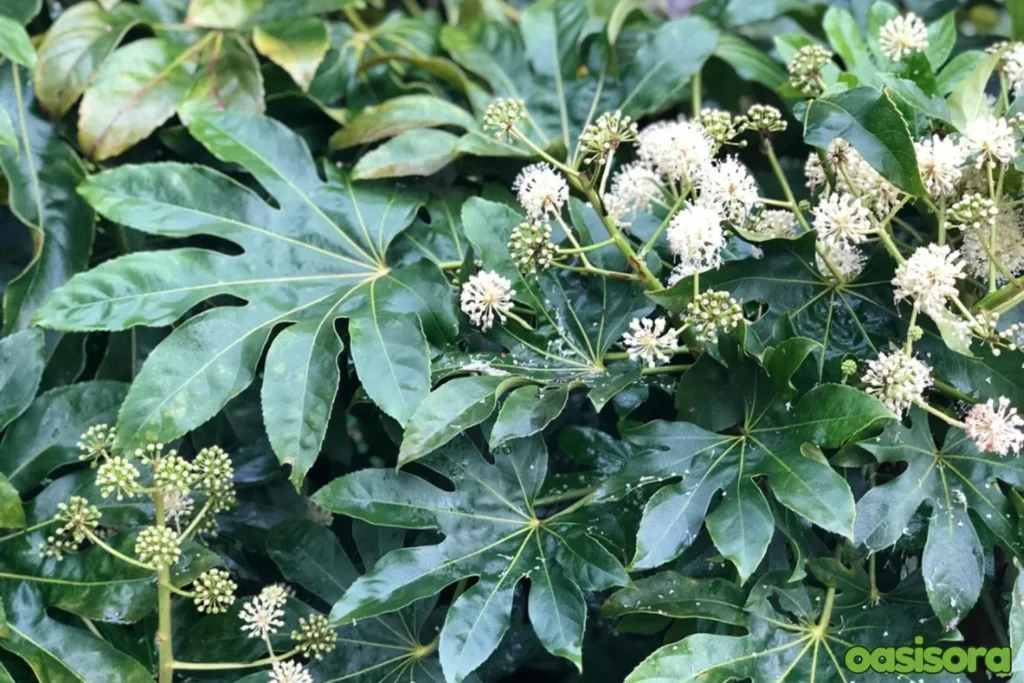
Japanese Aralia
Do you want a plant that adds a glossy touch to your home?. Then pick Japanese Aralia. With its big, shiny leaves, Japanese Aralia looks effortlessly beautiful in many rooms, especially in simple or minimal rooms.
The leaves of this plant are (big up to 30cm) and look like palms. The small white flowers appear in autumn. They’re a supreme choice for decorating your living room, as they grow pretty well indoors, too.
Care Tips for Japanese Aralia
Here’s how to take care of Japanese Aralia:
- Light: It thrives in bright, indirect light.
- Humidity: It needs a slight extra moisture in the air.
- Water: Water them carefully, not too much nor too little.
- Peace Lily (Spathiphyllum japonicum)
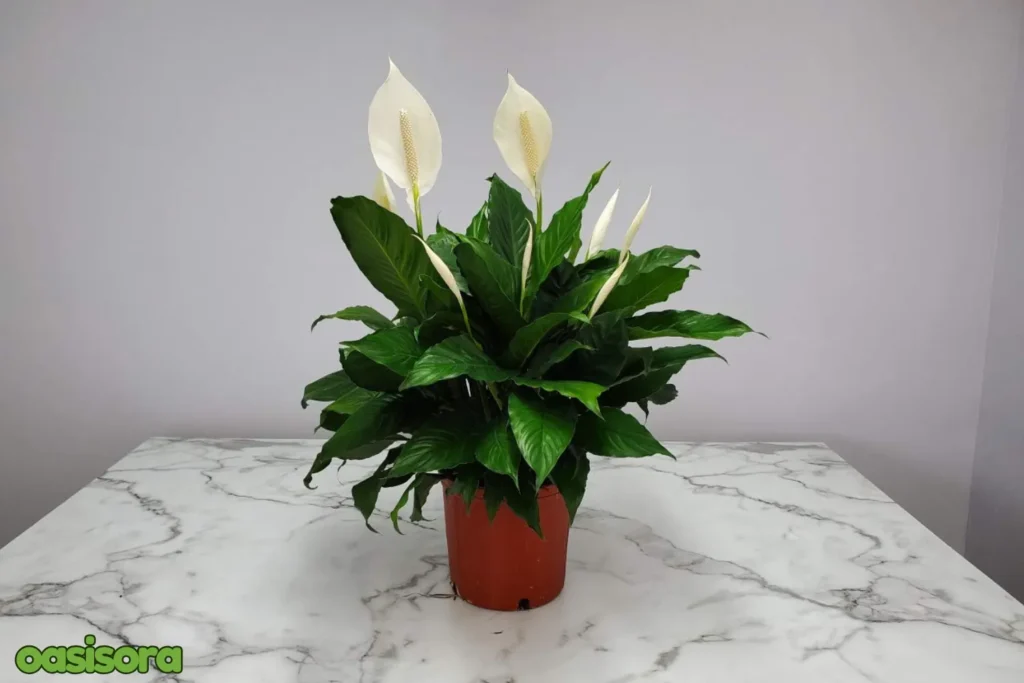
Peace Lily
Another super option for a Japanese indoor plant garden is the Peace Lily. It looks simple and very nice. Plus, it’s also easy to take care of and make your room air cleaner. It removes bad things from the air making your home healthier like:
- Formaldehyde
- Benzene
- Trichloroethylene. So, try to plant this remarkable plant too!
How to Care for Peace Lily?
To take care of a Peace Lily follow these tips:
- Light: It loves bright, but not direct light.
- Water: Water it once a week, but not too much.
- Soil: give them soil that is well-drained and not too dry.
- Fortunate Bamboo (Dracaena sanderiana)
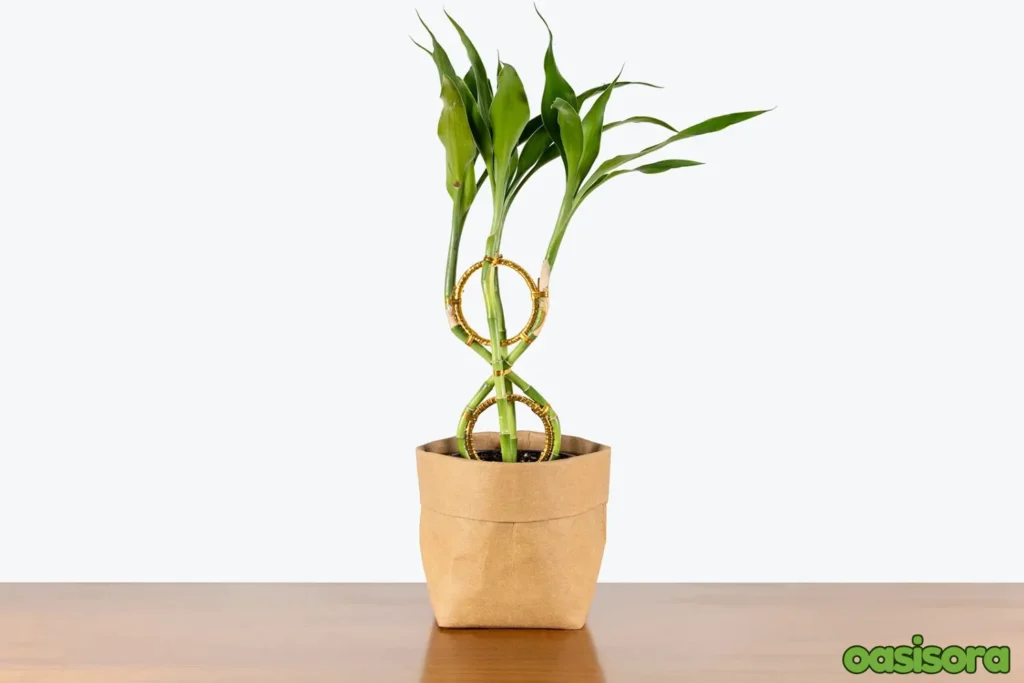
Fortunate Bamboo
Lucky Bamboo is a lucky plant and a symbol of luck and prosperity, often found in Japanese homes. It is robust and highly adaptable. It has upright thin stems and vibrant green foliage making it an excellent indoor plant.
Plus, it’s easy to care for and looks nice. Check out the top nurseries to buy Japanese garden plants.
Fortunate Bamboo Care Guide
To take good care of Lucky Bamboo:
- Ideal Location: Keep it out of direct sunlight but in a bright area.
- Water: Every one to two weeks, change the water. Make use of clean, fresh water.
- Maintenance: Remove any old leaves and keep the stems clean. Keep it from getting too chilly.
- Japanese Maple (Acer palmatum)
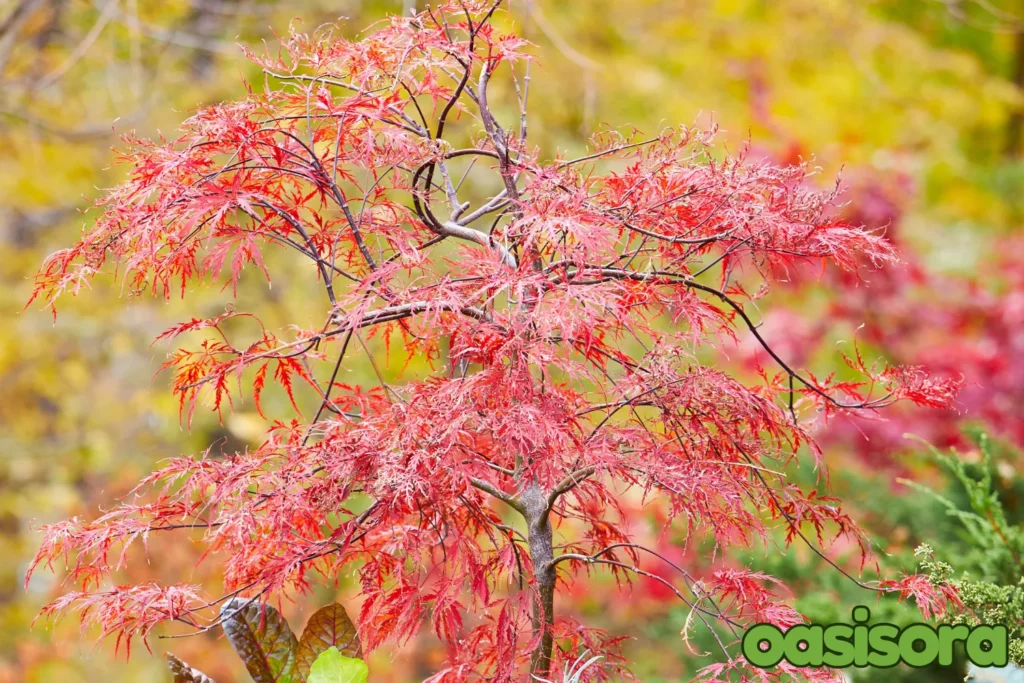
Japanese Maple
Japanese Maple is a beautiful Japanese indoor plant. These trees have lovely leaves and matchless shapes. People usually grow them outside, but some small types can grow indoors. But, these small trees need special care to grow well inside.
Indoor-Friendly Japanese Maple Varieties
These are some small-sized kinds of Japanese Maples that are excellent for indoor gardening:
- Kiyohime Japanese Maple

Kiyohime Japanese Maple
- Shishigashira Japanese Maple

Shishigashira Japanese Maple
- Beni Maiko Japanese Maple

Beni Maiko Japanese Maple
Care Tips for Japanese Maples Indoors
You can care for Japanese Maples indoors as follows:
- Light: Give them bright, indirect light.
- Water: You should water this plant carefully, not so much.
- Soil: Use a specific potting mix that drains well.
- Mist: You can mist the leaves often or use a special tray to keep them humid.
Lesser-Known Japanese Indoor Plants for Unique Home Décor
Hey folks! Now I’m going to tell you the unique and beautiful Japanese plants for your home:
- Crassula Ovata (Jade Plant)
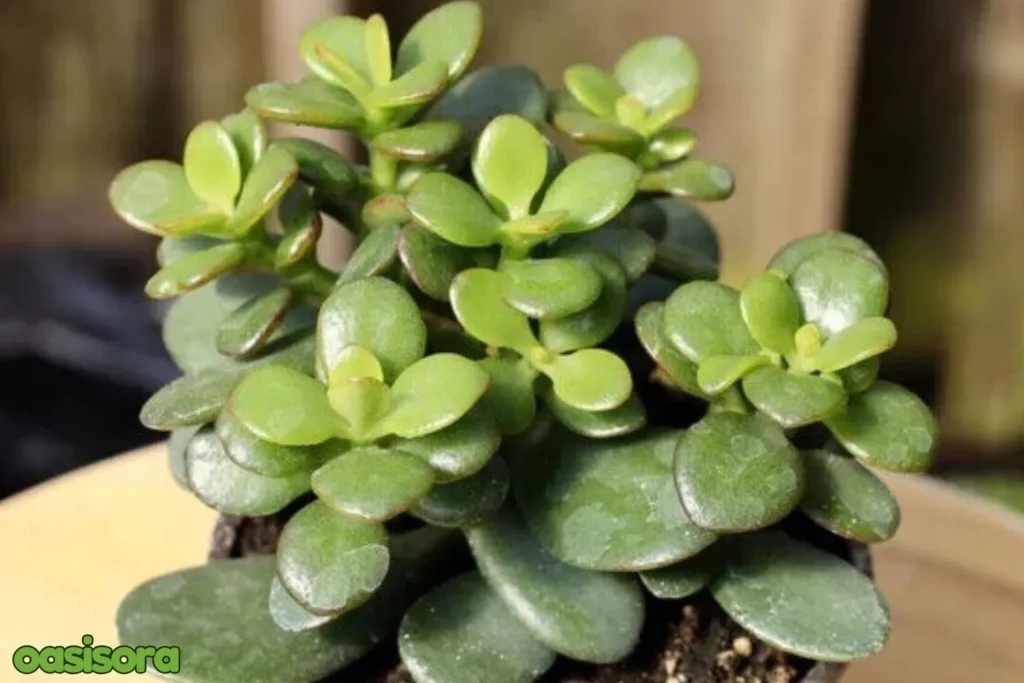
Jade Plant
The Jade Plant, also known as the Money Plant, is an eminent indoor plant in many Asian cultures. It has thick, fleshy leaves and grows like a tree. This amazing Japanese indoor plant brings peace and calm to your home. They:
- Purify the Air
- Reduce Stress
- Create A Relaxing Atmosphere.
This makes it a nice-looking and important part of any indoor Japanese garden.
Care Tips for Jade Plant
Jade Plants are easy to care for. Here’s how:
- Lighting: Direct bright light on it.
- Watering: When watering, let the soil dry out in between sessions.
- Soil: Use special soil for succulents.
- Pruning: Cut off dead leaves and shape the plant.
- Fertilizing: Feed it fertilizer every 6-8 weeks.
- Sansho (Zanthoxylum Piperitum)

Sansho
Also known as Japanese pepper, Japanese prickly-ash. Sansho is a fragrant, spiny shrub from the citrus family, originally from Japan and Korea. So, add some Japanese flair to your home with Sansho!!.
This unique plant is supreme for adding an exotic atmosphere to your room because of its potent, fragrant scent.
Caring for Sansho
Read these tips to take care of your Sasho:
- Lighting: Give Sansho bright, indirect light. Its leaves can be damaged by direct sheer sunshine.
- Temperature: Keep the temperature between 65°F and 75°F.
- Watering: Make sure you give the soil enough water to keep it damp only not waterlogged.
- Soil: It is vital to choose soil that drains well to avoid root rot.
- Japanese Orchid (Cymbidium Goeringii)

Japanese Orchid
Elevate the style of your home with the Japanese Orchid. This plant can add a touch of tweak and beauty to any room, making it impeccable for your modern home decor.
Plus, it is native to forests and rocky slopes at high elevations i.e.: 300-3000 meters, and features small pseudobulbs (up to 1 in/2.5 cm) at the leave’s base.
Care Guide for Japanese Orchids
Follow these tips to care for these plants:
- Lighting: Bright, indirect light is best for this plant. Direct sun can harm leaves.
- Humidity: Keep it 40-70% humid. Try a water and pebble tray.
- Watering: Water these plants weekly. Let potting mix dry slightly between waterings.
- Bloom Cycle: Japanese Orchids bloom from late winter to early spring.
- Encouraging Reblooming: Trim flower spikes after blooming to promote new flowers.
- Fertilization: Apply a balanced fertilizer (20-20-20) once a month.
Creating a Zen-Inspired Indoor Garden with Japanese Plants
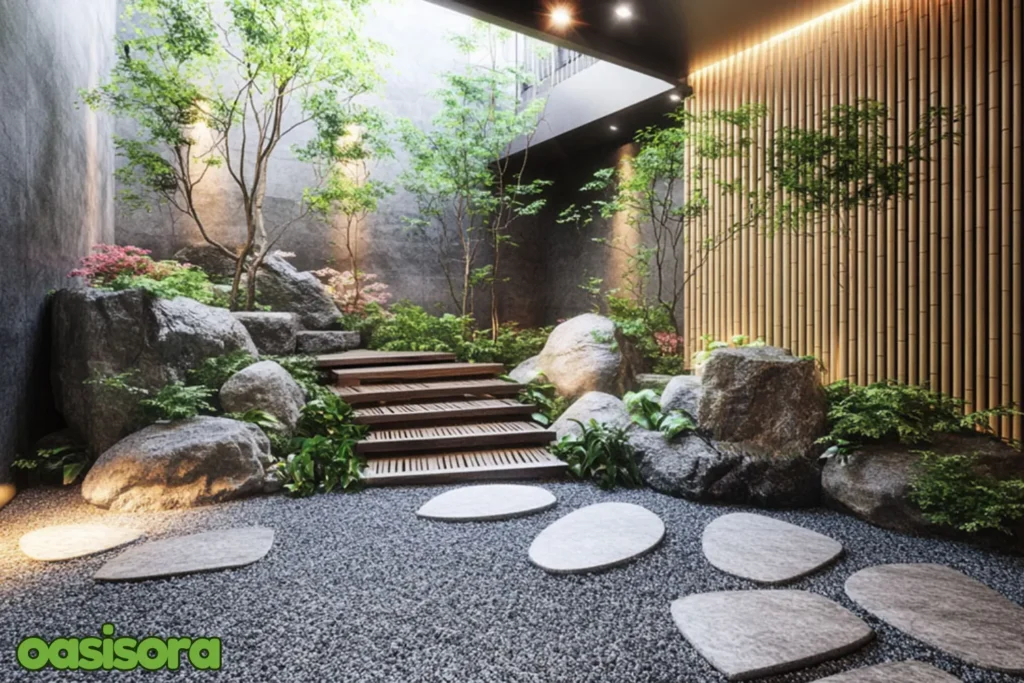
Japanese indoor Plants
An indoor garden with a Japanese pattern can bring serenity to your house. Here are some valuable pointers for planning and creating a tranquil haven:
- Choose Low-Maintenance Plants
Opt for low maintenance Japanese plants like: orchids, bamboo, and peace lilies that thrive excellently indoors.
- Balance Elements
Mix your yard’s plants, stones, and water features for a calmer and harmonious atmosphere.
- Using Naturals
For a cohesive look, you can utilize natural materials, i.e., wood and stone.
- Minimize Clutter
Keep your yard’s space uncluttered, minimal, and simple.
- Soft Lighting Settings
Use soft, indirect light for a peaceful ambiance.
Try these design tips to create your serene indoor oasis.
Using Stones and Moss
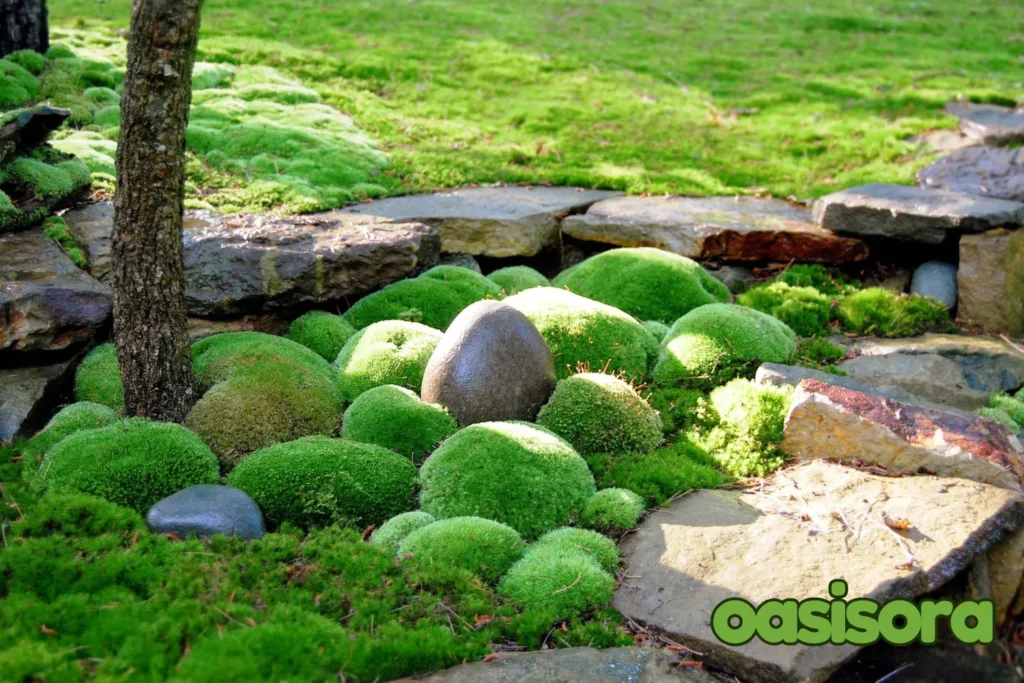
Stones and moss in Japanese Garden
Incorporate stones and moss in your Japanese indoor plant yard for a calming ambiance. Here’s how:
- Opt for the Right Stones: Choose smooth stones like river rocks.
- Use of Moss: Add moss for greenery and softness.
- Creating a Composition: Arrange stones and moss for balance.
- Including Additional Elements: Include some organic components, such as bamboo or branches.
- Maintaining the Space: Regularly clean and dust-free your outdoor space.
Popular Indoor Moss Varieties
Now read these popular indoor moss varieties:
- Hypnum (Sheet Moss): Dense, flat carpet for walls and gardens, low-maintenance.
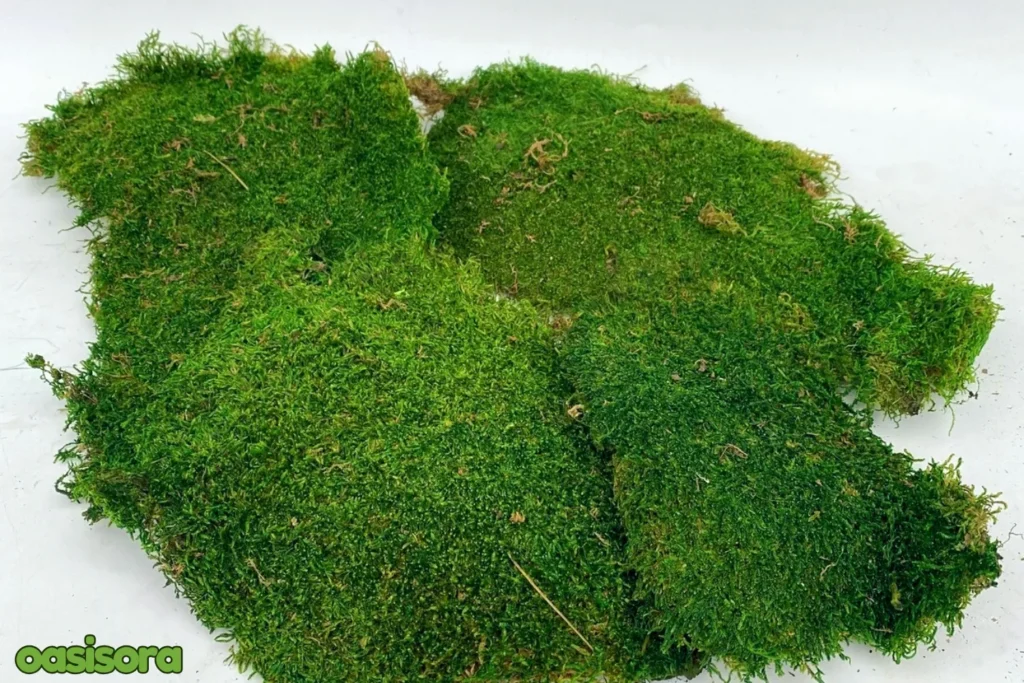
Hypnum (Sheet Moss)
- Leucobryum (Cushion Moss): Soft, round cushions for indoor spaces, high humidity.
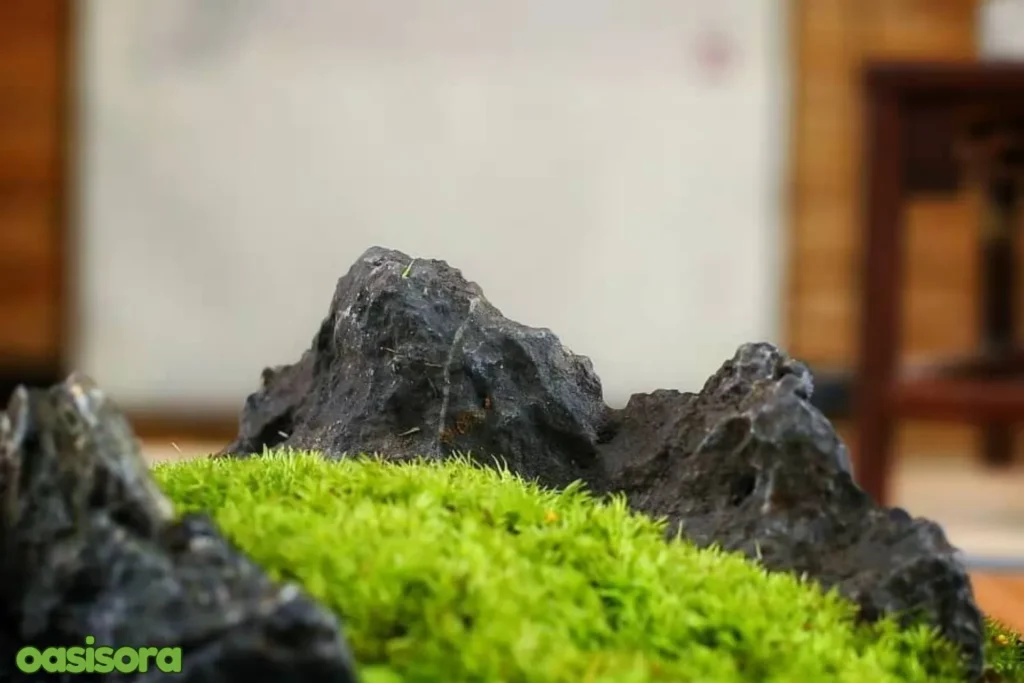
Leucobryum (Cushion Moss
- Thuidium (Fern Moss): Tiny fern-like fronds for a forest atmosphere, moderate light.

Thuidium (Fern Moss)
Learn more about Japanese Garden Moss-Ultimate Species.
How to Care for Moss Indoors?
Follow these effortless care tips to keep your indoor moss flourishing and enjoy its beauty and perks:
- Light: You can use low to moderate indirect light and avoid direct sunlight.
- Watering: Mist 2-3 times a week. However, avoid overwatering.
- Humidity: Maintain 40-60% humidity and use a humidifier if needed.
- Propagate: To propagate, place the moss on a new substrate and keep moist.
Tips for Maintaining Japanese Indoor Plants
Follow these remarkable tips for Japanese plants to thrive effectively indoors:
General Care Tips
- Provide proper light and placement.
- Water correctly.
- Maintain optimal humidity and temperature.
Light and Placement Considerations
- Choose locations based on plant light needs.
- Consider energy flow (Feng Shui).
Watering Techniques
- Establish a watering schedule.
- Use proper watering techniques.
Humidity and Temperature Needs
- Adjust humidity levels (40-60%).
- Maintain optimal temperatures (15-25°C).
FAQs
- Which indoor plant would be perfect to design a Japanese garden?
If you are new to Zen yards, choose plants like peace lilies, bamboo, and jade. These plants need less care and are elegant too. This makes them flawless Japanese garden aesthetic plants.
- Can Japanese Maples thrive indoors year-round?
Yes, it thrives effectively with proper pruning, bright indirect light, moderate temperature, and humidity.
- How frequently should I water my bonsai tree?
You can water daily or every 2-3 days when the soil is dry.
- Which lighting conditions are ideal for Japanese plants kept indoors?
Japanese indoor plant yards thrive greatly in bright, indirect light from east or west windows.
- How can I incorporate Zen principles into my indoor garden design?
You can create a calming atmosphere by applying Zen principles:
- Simplicity
- Balance
- Natural flow.
This pattern uses plants, stones, and other elements for a serene space.
